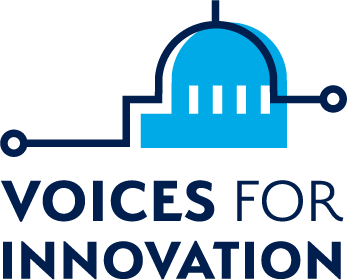In a closely watched antitrust case, a U.S. District Court Judge ruled that Google had abused its monopoly power in search. “Google is a monopolist, and it has acted as one to maintain its monopoly,” Judge Amit P. Mehta wrote in a 277-page ruling. A separate trial to determine remedies will begin in September.
Filed in 2020, the U.S. Department of Justice suit was joined by 38 state attorneys general. Google says it will appeal the ruling. Google faces a second antitrust lawsuit over its ad technology. The federal government has also filed antitrust suits against Amazon, Apple, and Meta. The Google ruling was widely covered in the press; see Associated Press, Reuters, CNN, and Politico.
Ensuring a healthy, competitive technology marketplace is a priority for Voices for Innovation. You can learn more on VFI’s Antitrust and Competition issue page. Thank you for reading.
This Week in Washington
- CyberScoop: A report from the Government Accountability Office (GAO) found that the Environmental Protection Agency (EPA) is in “urgent” need of a national strategy to combat cyber risks. The water sector faces known difficulties with creating a culture of cybersecurity, and while the EPA does support risk and resilience assessments for community water systems, they are only applied to systems that serve more than 3,300 people.
- Nextgov: The Federal Cyber Workforce Training Act of 2024, which would require the National Cyber Director to establish an institute to serve as a centralized resource for training cybersecurity personnel in the federal government, recently advanced in the Homeland Security and Governmental Affairs Committee in the Senate.
- FedScoop: The National Oceanic and Atmospheric Administration (NOAA) is collaborating with the Department of the Interior and the Department of Agriculture’s U.S. Forest Service to use satellites to detect and track wildfires. Through the collaboration, data will be collected from NOAA satellites and incorporated into wildfire response allowing for “near-continuous monitoring of fire intensity.”
- New York Times: The Justice Department sued TikTok, accusing the platform of illegally collecting children’s data. The U.S. government claims that the social media app was gathering personal information from users under the age of 13 without parental consent.
Article Summary
- Axios: States are looking to emulate Colorado’s new law regulating artificial intelligence despite political and industry leaders wanting to roll back its far-reaching impact. Though other states have implemented regulations around AI, Colorado’s law stands out due to its vast impact on private sector AI uses.
- The Oklahoman and Wisconsin Public Radio: Oklahoma is poised to receive $797 million in grant funds from the federal Broadband Equity, Access, and Deployment (BEAD) program this year. Similarly, Wisconsin’s $1.1 billion broadband plan has been approved, enabling the state to implement a program to help meet Wisconsin’s goal of bringing high-speed internet to nearly all underserved and unserved areas by the end of the decade.
- Axios: An Olympic 100m gold came to a thousandth of a second, and thanks to technology, Olympics’ officials were able to analyze the final millimeters of the race to determine a victor.
- Washington Post: A New York minor filed a lawsuit seeking class-action status against Meta, alleging that the social media company sought to keep teens addicted to Instagram while knowingly exposing them to harmful content. The lawsuit further argues that certain features were implemented on Instagram that Meta leaders knew would be addictive for teens.
Featured Video
- VOX
Biologists have made a lot of progress in animal communication in recent history, but there have been concerns that the limit of discovery will soon be reached. This limitation is due to the fact that certain things are impossible to observe with the human eye alone. However, the possibilities for discovery increase exponentially with the help of AI. Hear how AI researchers and biologists are working together to detect animal communication patterns. (“How AI could help us talk to animals” – July 31, 2024)
